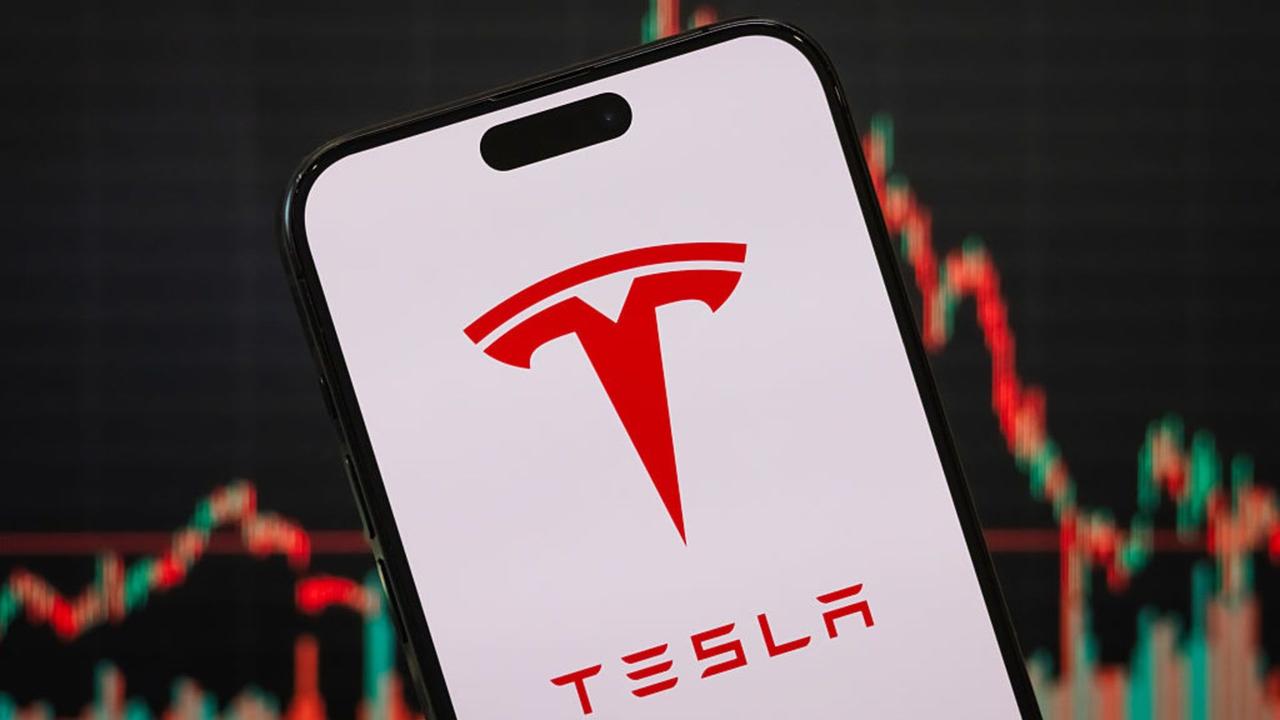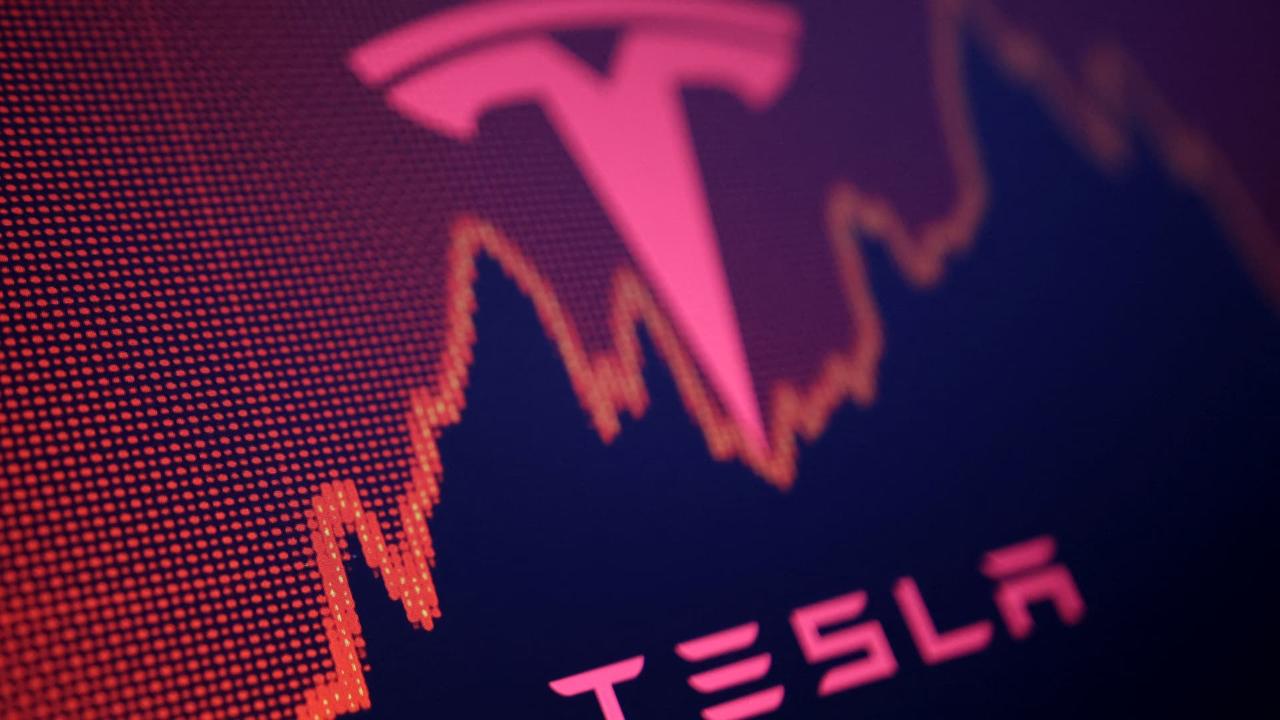Tesla's Future: Balancing EV Challenges with AI and Robotics Ambitions
2 Sources
2 Sources
[1]
Where Will Tesla Stock Be in 5 Years? | The Motley Fool
The electric vehicle maker is trying to expand into new product categories. Will it succeed? Autonomous vehicles and artificial intelligence (AI). Robots. Energy storage. These are the many products promoted by Tesla (TSLA -4.68%) to drive future growth for this technology company. Yet, if you look at the financials, the vast majority of this business still revolves around electric vehicles (EVs), and likely will for many years into the future. This puts Tesla investors in a tricky situation. On the one hand, CEO Elon Musk is promising rapid growth from these new products such as the Optimus Robot. On the other hand, the EV segment is stagnating and actually saw lower deliveries in 2024 compared to 2023. This is likely why Tesla stock is still below highs set in November 2021. Does that make Tesla stock a buy today? Let's dig into the numbers and figure out where this stock may land five years from now. Tesla's growth in EVs has stagnated. Deliveries to customers grew from 500,000 in 2020 to 1.8 million in 2023, but actually fell to 1.79 million in 2024. This is in spite of the company significantly lowering the average selling prices for new vehicles in order to catalyze demand. EV sales have slowed down in the United States while Tesla's market share of the automotive market has started to move in the wrong direction in the United States, Europe, and China. Competitors such as BYD are not having this issue. The Chinese EV maker hit a record 4.27 million deliveries in 2024, more than twice Tesla's deliveries. BYD does not sell in the United States but is dominating the Chinese market and moving internationally. Tesla is looking to regain its leadership with an updated Model Y vehicle as well as the Cybertruck, although the Cybertruck does not seem to have caught much of the customer demand that investors expected. In 2025, Tesla is guiding for deliveries to grow again, but did not specify how quickly. It will likely be below the 50% annual growth previously promised to investors. Track this metric closely to determine how well Tesla's core business is doing in 2025. The exciting part about Tesla's business -- and why the stock is up 75% in the past year -- is its promised product pipeline. This includes all the hottest trends of the day. It is currently working on the Cybercab, which is a purpose-built self-driving taxi set to go into production in 2026. If successful, this vehicle could help Tesla compete with Waymo, which is growing its robotaxi network rapidly around the United States. Which leads to Tesla's second big investment: AI and autonomous vehicle software. The company has promised to invest billions of dollars into AI infrastructure and self-driving software technology. This will help improve the value proposition of its vehicles sold to customers while also power the Cybercab for its possibly forthcoming Cybercab taxi network. Lastly, we have the Optimus Robot, an ambitious science project and a departure from vehicles and energy generation. It is unclear when this product will come out as it still has many technical developments, but Musk believes it could make Tesla worth $25 trillion someday. All these forthcoming products sound exciting. A $25 trillion opportunity? Wow, Tesla stock could be a great buy today. This is true if you take Tesla and Musk's statements at face value. I think investors should be a tad more skeptical. Musk has a long history of dangling a carrot in front of investors, promising future riches. Sometimes, these promises work out. Other times, not so much. Back in 2016, Musk said that Tesla cars would all be self-driving within a few years. That was almost 10 years ago now and still hasn't come to fruition. Investors can have excitement around the potential of AI, the Cybercab, and the Optimus Robot, but don't think these are guaranteed to succeed. The problem is, Tesla's stock is priced like they will. It has a market cap of $1.1 trillion and generated just $3.6 billion in free cash flow over the past 12 months. That is a 300 times free cash flow multiple, indicating that investors are pricing in a huge growth in profits over the next five to 10 years. With this in mind, I think it is unlikely that Tesla stock will be much higher five years from now, making it a stock investors should avoid right now.
[2]
Where Will Tesla Stock Be in 10 Years? | The Motley Fool
Tesla (TSLA -4.68%) investors have been on a roller-coaster ride for the last few years. Shares in the electric vehicle (EV) giant surged in 2020 and 2021 as business boomed in the post-pandemic period. Now, the company is once again near all-time highs amid optimism about its pivot to self-driving cars and robotics. Can Tesla live up to the hype? Let's dig deeper to determine what the next decade could have in store. Tesla's controversial CEO, Elon Musk, is no stranger to bold and arguably unrealistic projections. But his forecast for the company's new Optimus robots is particularly daring. First announced at Tesla's AI Day event in 2021, Optimus is a humanoid robot designed for general purpose tasks. Musk believes this could be a $10 trillion revenue opportunity as it replaces humans in repetitive and dangerous jobs. Humanoid robots also synergize with the large language models (LLMs) behind AI chatbots, which could dramatically increase their potential use cases. Tesla's management aims to produce several thousand Optimus robots this year, with an exponential ramp-up in production. However, while Tesla's Optimus project looks exciting, investors should take everything with a grain of salt. For starters, Tesla's leadership has a track record of overpromising and underdelivering. They have already admitted the staggering complexities in building this technology, suggesting that its training needs will be 10 times more than what's needed for its full self-driving program. It is also unclear if robots will be a more efficient labor source than low-wage workers in developing countries. Overall, investors should consider Tesla's Optimus program an experimental project instead of a core growth driver for the company. On the surface, Tesla's automotive business is fantastic. In 2024, the company sold a whopping 1.77 million vehicles, making it the second largest EV maker. Its Model Y is the best-selling car in the world. And its Cybertruck is America's best-selling electric pickup truck (with 38,965 units sold) despite its polarizing design and $80,000 price tag. However, there is one big problem: growth. Tesla's fourth-quarter revenue increased by only 2% year over year to $25.2 billion because of an 8% decline in automotive revenue. And while the company's other business segments, like energy generation and storage, helped prop up the top line, operating income dropped 23% to $1.58 billion. The EV industry is becoming more competitive, especially in the key Chinese market. This is a significant threat for Tesla because it doesn't want to become just another low-margin automaker. Over the coming decade, self-driving cars may be the key to boosting profitability. Analysts at McKinsey expect autonomous driving to be a $300 billion to $400 billion revenue opportunity by 2035. Tesla has an advantage because of the vast amounts of data generated by its cars already on the road. The company has also developed a supercomputer called Dojo, which is designed to process this data and assist with computer vision. In ten years, autonomous-driving-related software-as-a-service (SaaS) could become a significant part of Tesla's business model and boost its margins. The next decade could see massive shifts as new technologies like AI, robotics, and self-driving cars become mainstream. Tesla's shareholders benefit from having a visionary leader like Elon Musk guide the company in these crucial years. And the company is on track to establish itself in high-value software and service opportunities.
Share
Share
Copy Link
Tesla faces stagnating EV sales but bets big on AI, autonomous driving, and robotics for future growth. Investors weigh Elon Musk's ambitious projections against market realities.

Tesla's EV Market Challenges
Tesla, the electric vehicle (EV) giant, is facing a significant slowdown in its core business. In 2024, the company's EV deliveries actually decreased to 1.79 million from 1.8 million in 2023, despite lowering average selling prices to stimulate demand
1
. This stagnation comes as competitors like BYD in China are experiencing rapid growth, with BYD achieving a record 4.27 million deliveries in 2024, more than doubling Tesla's numbers1
.Tesla's market share has been declining in key markets such as the United States, Europe, and China. The company is attempting to regain its leadership position with an updated Model Y and the introduction of the Cybertruck, although the latter hasn't generated the expected customer demand
1
.Ambitious AI and Autonomous Driving Investments
Despite challenges in the EV sector, Tesla is making significant investments in artificial intelligence (AI) and autonomous vehicle technology. The company plans to pour billions into AI infrastructure and self-driving software, aiming to enhance the value proposition of its vehicles and power future projects like the Cybercab
1
.The Cybercab, a purpose-built self-driving taxi scheduled for production in 2026, represents Tesla's effort to compete with companies like Waymo in the growing robotaxi market
1
. This initiative aligns with analysts' projections that autonomous driving could become a $300 billion to $400 billion revenue opportunity by 20352
.Tesla's advantage in this space stems from the vast amounts of data generated by its existing fleet and its custom-built Dojo supercomputer, designed to process this data and assist with computer vision tasks
2
.The Optimus Robot: A Moonshot Project
One of Tesla's most ambitious and controversial projects is the Optimus humanoid robot. CEO Elon Musk has made bold claims about its potential, suggesting it could be a $10 trillion revenue opportunity and potentially make Tesla worth $25 trillion
1
2
.The Optimus project aims to create a general-purpose robot capable of replacing humans in repetitive and dangerous jobs. Tesla plans to produce several thousand Optimus robots this year, with intentions to ramp up production exponentially
2
.However, the company acknowledges the significant challenges in developing this technology, estimating that its training needs will be ten times greater than those of its full self-driving program
2
.Related Stories
Investor Skepticism and Market Valuation
Tesla's stock price reflects high investor expectations, with a market cap of $1.1 trillion despite generating only $3.6 billion in free cash flow over the past 12 months
1
. This valuation suggests that investors are pricing in substantial profit growth over the next 5-10 years.However, some analysts advise caution, noting Elon Musk's history of making ambitious promises that don't always materialize on schedule. For instance, Musk's 2016 prediction that Tesla cars would be fully self-driving within a few years has yet to come to fruition
1
.Looking Ahead: Balancing Core Business and Innovation
As Tesla navigates the next decade, it faces the challenge of revitalizing its core EV business while pursuing cutting-edge technologies in AI, robotics, and autonomous driving. The company's ability to translate these ambitious projects into profitable ventures will be crucial for justifying its high valuation and securing long-term growth.
While Tesla benefits from having a visionary leader in Elon Musk, investors must weigh the potential of these futuristic projects against the current market realities and increasing competition in the EV sector
2
. The next ten years will be critical in determining whether Tesla can successfully transition from a primarily EV-focused company to a diversified technology leader in transportation, AI, and robotics.References
Summarized by
Navi
[1]
[2]
Related Stories
Recent Highlights
1
Google launches Gemini 3 Flash as default AI model, delivering speed with Pro-grade reasoning
Technology

2
OpenAI launches GPT Image 1.5 as AI image generator war with Google intensifies
Technology

3
OpenAI launches ChatGPT app store, opening doors for third-party developers to build AI-powered apps
Technology








